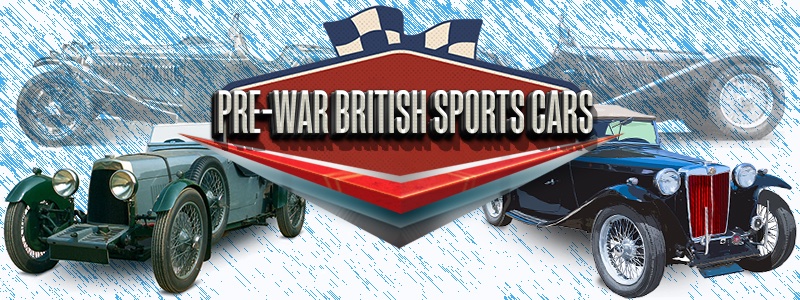When Godfrey and Frazer-Nash built the G.N., they set a standard for the light sporting vehicle which persists to this day. They realised that the true enthusiast was not interested in fancy coachwork or luxurious upholstery, being attracted only by performance with a capital "P." After the demise of the G.N.
the partners each went their separate way, but still retained the same outlook. Frazer-Nash, of course, evolved the famous chain-drive machines that bore his name, but it was many years afterwards before Godfrey joined with Messrs. Halford and Robins to produce the H.R.G.
Right from its introduction in the middle 'thirties, the H.R.G. started collecting premiers in trials, making best times in speed events, and making its presence felt in sports-car racing, as well as gaining a name for itself as a high-speed touring vehicle. In fact, the H.R.G. came pretty near to being the best "all-rounder" in the pre-war sports-car world. The earliest cars were fitted with the four-cylinder 1496-c.c. (69 x 100-mm.) o.h.v. Meadows power unit, which pushed out about 58 b.h.p. at 4,500 r.p.m. This, coupled with the low weight of 14-cwt., gave the car a very fine performance indeed, especially as regards acceleration, which compared favourably with blown cars.
The chassis, although extremely light, was very strong, and the layout made use of half-elliptic springs front and half-elliptic rear. Bodywork, although typical of the pre-Hitler war sports car, was inclined towards the Spartan; in fact, it was a no-frills and no-nonsense little car, of extreme charm. A year or two before World War 2 broke out, the H.R.G. concern adopted the overhead-camshaft Singer engine in modified form, and thus added an 1100-c.c. car to the range. The post-war cars all made use of this power unit, the capabilities of which were well known at the time. The 1496-c.c. (68 x 103"-mm.) version pushed out over 65 b.h.p., which gave the car a maximum speed of over 85 m.p.h., and about 90 m.p.h. for the Aerodynamic model.
The smaller-engined car (60 x 95-mm., 1074-c.c.) was capable of around 75 m.p.h. without tuning, but examples in the hands of private owners exceeded 80 m.p.h. Gearboxes were much improved after WW2, and featured individually ground gears, whilst the modified engines had special crankshafts, separate exhaust manifolds (branch pattern), and twin S.U. carburetter inlet manifolds. A unique feature of the rear suspension was the adoption of dual shock-absorbers, friction and hydraulic, mounted fore and aft of the rear axle. The H.R.G. was one of the few cars fitted with the manufacturer's own design of brakes. They were of the cable-operated pattern, and were extremely efficient.
The cars were very successful in every branch of competition, and were recognised as being amongst the best small sports cars ever produced in Britain. They also gained a great reputation for reliability and wear-ability, making their value in the post WW2 used-car market very high. Very few cars ever became available, as owners simply did not want to part with them. After WW2 the company hoped for a much greater output, but the concern was greatly handicapped by lack of factory space. There was no true assembly line; each finished chassis was completed where there was sufficient room to work. However, only first-class workmanship was permitted to pass the eagle eye of Robins and Godfrey, and the purchaser was not supplied until the machine is absolutely perfect in every detail. The design of the Aerodynamic two-seater resulted in a great many orders from outside the UK – but the writing was on the wall. This was a time when the hand-built automobile would always outlast the quantity-produced vehicle. The real problem was in finding enough buyers who thought the same.




